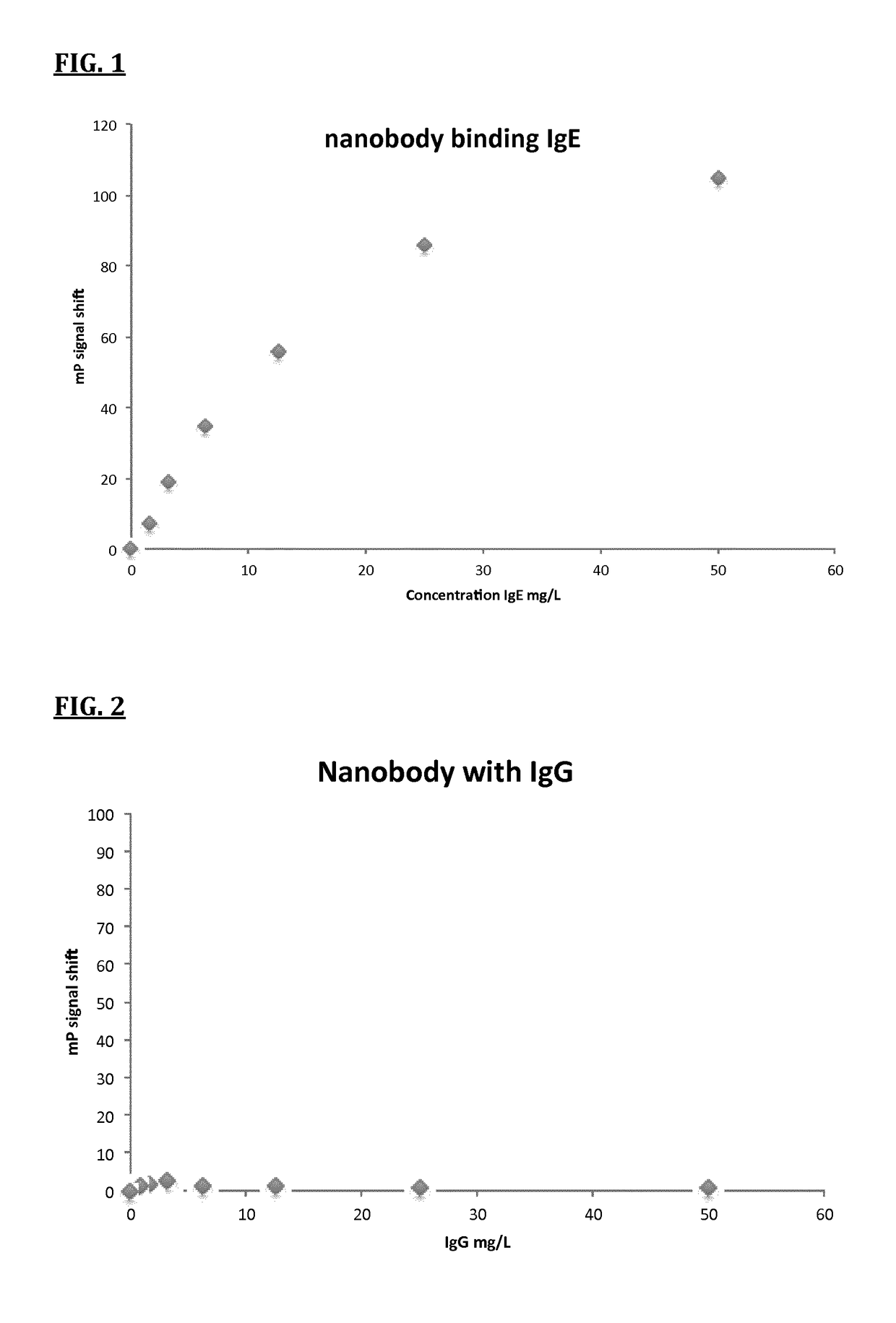A method of determining the abundance of a target molecule in a sample
a target molecule and sample technology, applied in the field of determining the abundance of a target molecule in a sample, can solve the problems of high cost of a sample, unsuitable for quantitative detection of antibodies in a sample, etc., and achieve the effect of high-sensitivity quantification
- Summary
- Abstract
- Description
- Claims
- Application Information
AI Technical Summary
Benefits of technology
Problems solved by technology
Method used
Image
Examples
Embodiment Construction
[0023]“Target molecule-binding probe” means a conjugate of single domain antibody and a fluorescent probe in which in the conjugated state the single domain antibody is capable of binding selectively to the target molecule and in which the fluorescent probe is capable of re-emitting light upon excitation. Conjugation can be achieved by covalent bonding using, for example, a stable linker which may be cleavable or non-cleavable. Specific methods of coupling antibodies, including single domain antibodies and single chain antibodies, to a separate entity will be well known to those skilled in the art and are described in, for example:[0024]Chakravarty et al., Theranostics 2014; 4(4): 386-398;[0025]ADC Review / Journal of Antibody-drug Conjugates: Stable Linker (technologies), May 23, 2013;[0026]Methods Mol Biol. 2013; 1045:1-27. doi: 10.1007 / 978-1-62703-541-5_1;[0027]“Cell killing by antibody-drug conjugates”. Cancer letters 255(2): 232-40.doi:10.1016 / j.canlet.2007.04.010. PMID 17553616;...
PUM
| Property | Measurement | Unit |
|---|---|---|
| fluorescence lifetime | aaaaa | aaaaa |
| concentration | aaaaa | aaaaa |
| molecular weight | aaaaa | aaaaa |
Abstract
Description
Claims
Application Information
 Login to View More
Login to View More - R&D
- Intellectual Property
- Life Sciences
- Materials
- Tech Scout
- Unparalleled Data Quality
- Higher Quality Content
- 60% Fewer Hallucinations
Browse by: Latest US Patents, China's latest patents, Technical Efficacy Thesaurus, Application Domain, Technology Topic, Popular Technical Reports.
© 2025 PatSnap. All rights reserved.Legal|Privacy policy|Modern Slavery Act Transparency Statement|Sitemap|About US| Contact US: help@patsnap.com

